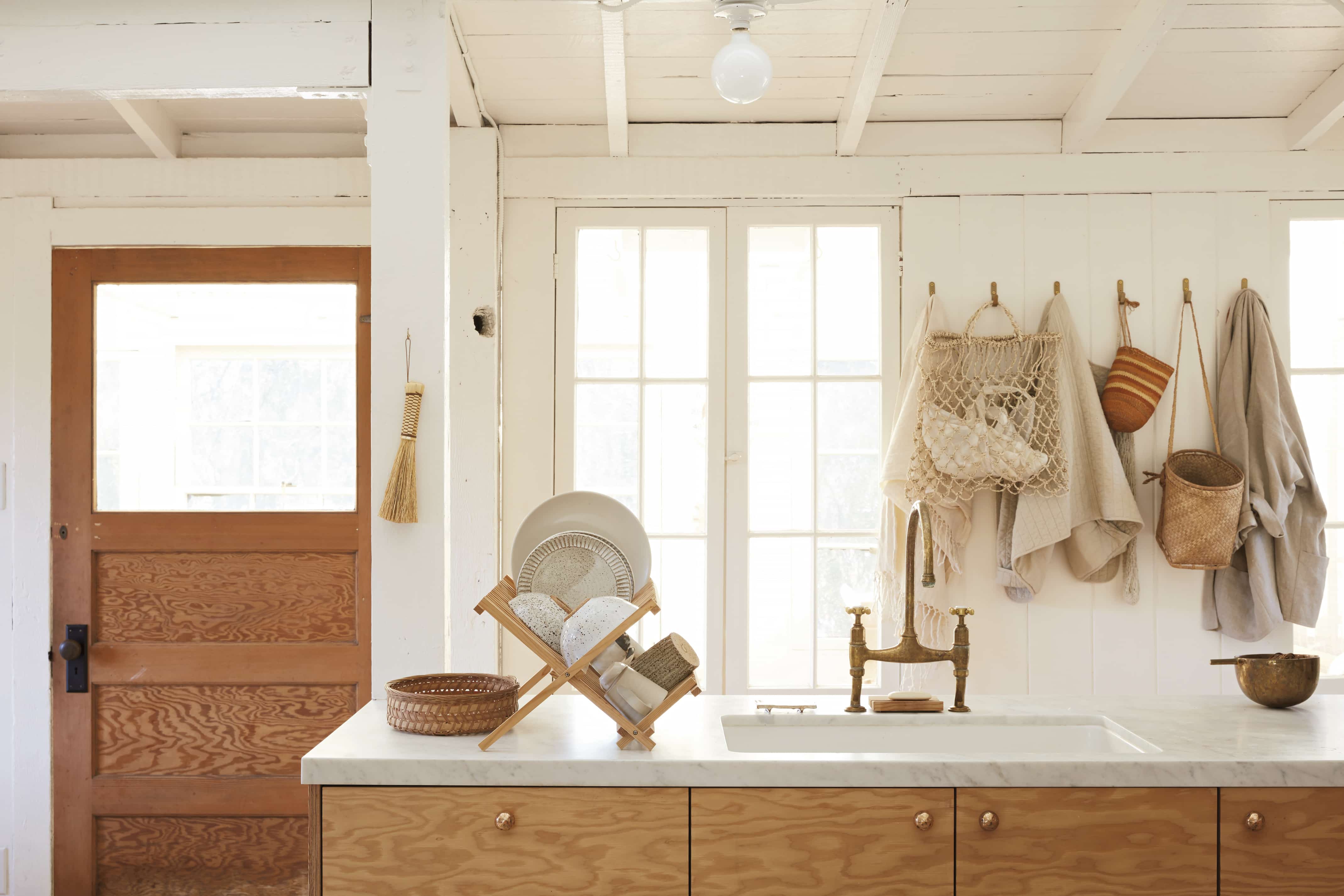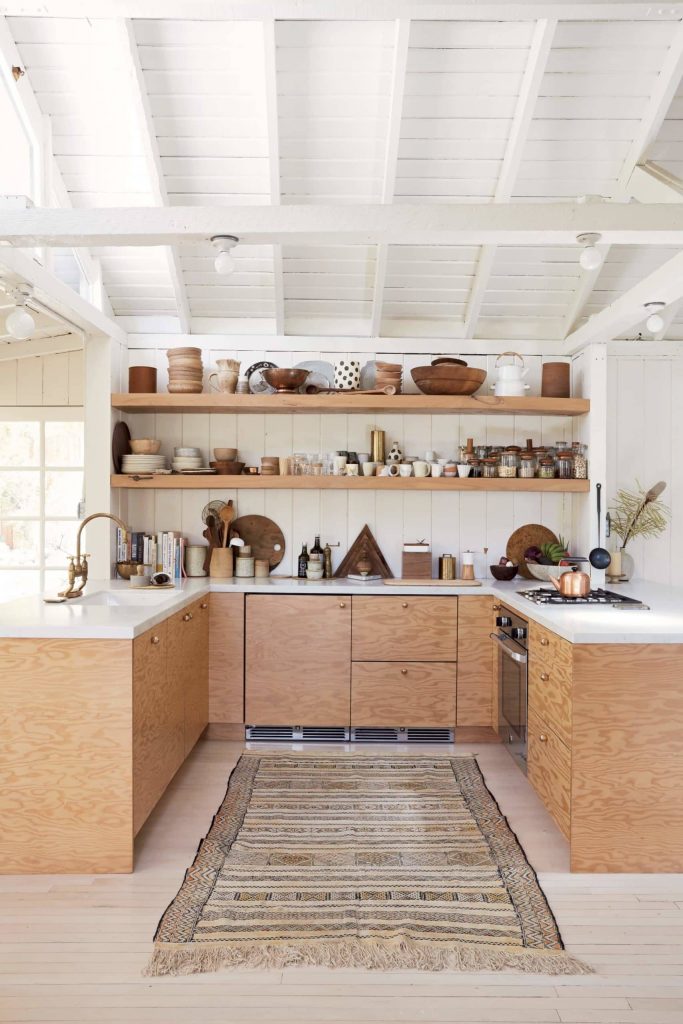In their new book, Abode, General Store retailers Serena Mitnik-Miller and Mason St Peter demonstrate their décor philosophy in their California home.
The edit
Rearranging your furniture or rethinking the way it functions can be transformative. We recommend beginning with your living room — a space that often has the most flexibility and biggest impact when it comes to switching things up.
Start by sketching a basic floorplan that maps out the furniture in the space. Looking at the layout from this perspective frees you up to see all of the possibilities. If your current configuration follows the common layout of a couch facing a television (and watching television isn’t your priority), consider a change. Our ideal orientation? One that takes in the view. If your room doesn’t have a view, create a nice one inside, orienting the furniture towards a beautiful piece of art, or a bookshelf, or the thing with the most character, like the fireplace. If it’s a room in which people are going to gather, you can facilitate conversation by orienting the furniture toward the centre.

The hero
The nesting process is an imperfect and ever-evolving one. There’s no single right way to approach it, but for us, the most effective jumping-off point is determining a space’s dominant piece. In all likelihood, this will be the thing that occupies the most real estate in the room and that’s emblematic of its purpose — the dining room’s dining table, the bedroom’s bed. With this starting point in place, you can nail down the pieces that will orbit around it, considering your must-haves and assigning each to a location.
In the case of our dining room, we knew we wanted a rectangular table to shape the space, something not too bulky, in a neutral colour and a hard-wearing material. These are qualities that any table we put here will possess, giving us the versatility to change without sending the entire room into disarray.

The whole
When we begin to add to a space, we’re constantly asking ourselves: How will we use this? How will it enhance the room’s beauty? The goal is to create an ecosystem that feels harmonious and effortless.

The hues
You may have noticed that when it comes to interior design, we don’t rely on colour for impact. That’s not to say we don’t appreciate colour, but it raises an important point about our approach. For us, it’s not about the walls, floors, counters or cabinets — we want to draw attention to the whole, not the parts, and a cohesive neutral palette helps us achieve this.

The mix
The things that populate our Topanga home represent a sort of map of our lives and tastes. There’s no single formula for ensuring cohesion, but here maintaining a palette of neutrals and wood tones results in a scheme in which things ‘play’ well together; there’s a common thread. The same applies to your chosen themes and motifs; whether it’s florals or modern Zen, blending is successful so long as you have recurring, consistent elements. In other words, balance difference with similarity.


Photography
Mariko Reed



